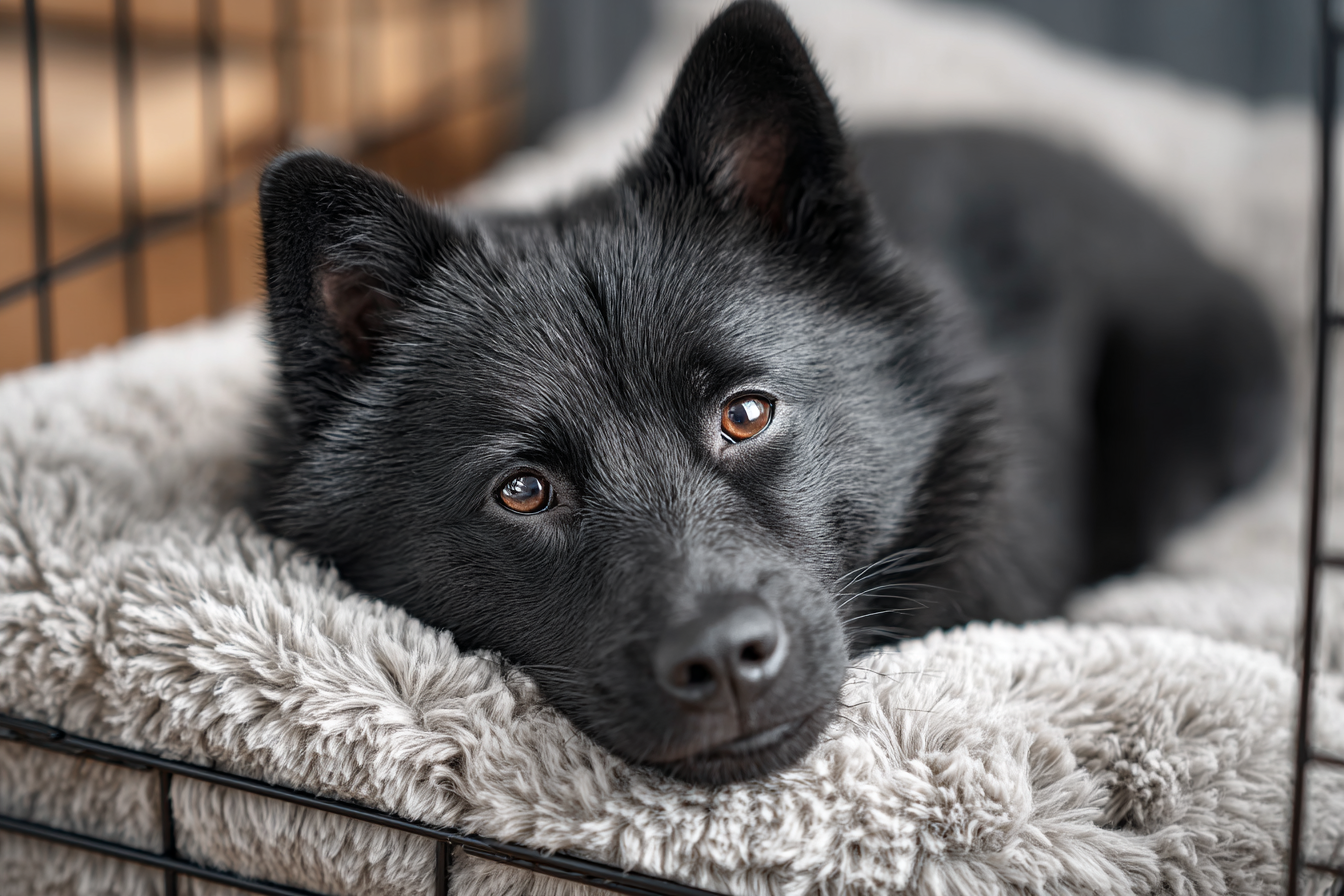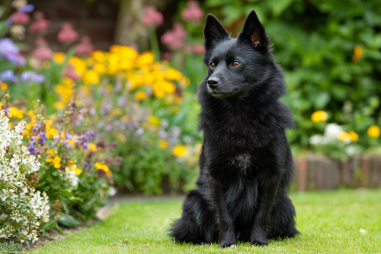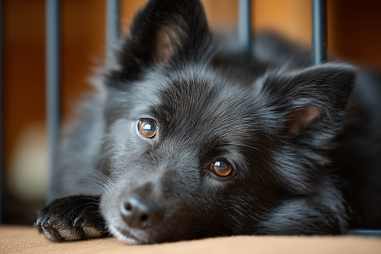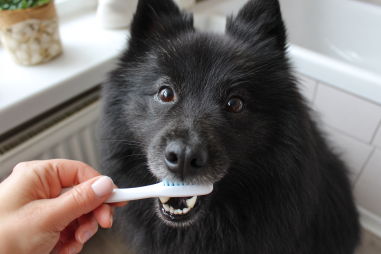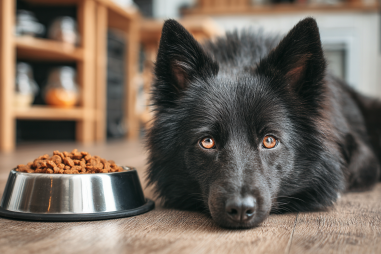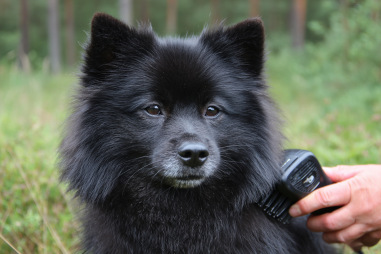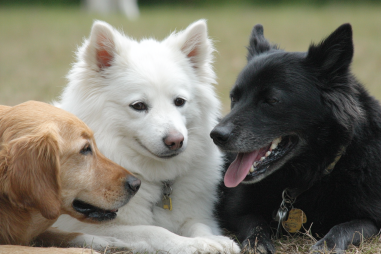Crate training is a fantastic tool that can make life easier for both you and your Schipperke. These lively and intelligent dogs benefit greatly from having a secure, cozy space they can call their own. Beyond offering a safe haven, crate training supports housebreaking, reduces anxiety, and helps with managing your dog’s behavior. If you’re new to crate training or looking for some helpful tips specific to your Schipperke, this guide will walk you through the basics with compassion and clarity.
Benefits of Crate Training
Crate training offers several advantages for Schipperkes and their owners. First and foremost, a crate provides a secure retreat where your dog can feel safe and relaxed. Schipperkes often have a strong sense of territory, and a crate becomes their little den — a familiar spot free from distractions.
In addition to comfort, crate training is an effective housebreaking tool. Dogs naturally avoid soiling their sleeping area, so keeping your Schipperke in a crate while unsupervised encourages them to hold their bladder and bowels until you take them outside. This helps speed up the potty training process.
Moreover, crates can reduce destructive behaviors. Schipperkes are smart and energetic, sometimes getting into things they shouldn’t when left alone. A crate keeps them safe and your belongings intact by limiting access to potentially harmful or restricted areas.
Finally, crates are invaluable for travel and vet visits. Having a familiar crate can reduce stress during car rides, trips to new environments, or stays away from home. With proper crate training, your Schipperke will associate the crate with comfort and security, no matter where they are.
Choosing the Right Crate Size
Selecting the right crate size is essential to making your Schipperke feel comfortable without promoting bad habits. The crate should be big enough for your dog to stand up, turn around, and lie down comfortably, but not so large that they can designate a corner as a bathroom area.
Given that Schipperkes are small but energetic dogs, a medium-sized crate usually works well. Generally, a crate measuring around 24 inches in length and 18 inches in width provides ample space. However, you can always measure your dog at the shoulders to get a more precise fit.
Keep in mind if your Schipperke is still a growing puppy, you might want to consider a crate with a divider. This allows you to adjust the usable space as your dog grows, preventing them from having too much room too soon, which can interfere with housebreaking.
Introducing the Crate Gradually
Suddenly forcing your Schipperke into a crate can cause fear and resistance. Instead, introducing the crate gradually helps your dog build positive associations with it.
Start by placing the crate in a common area where your dog spends a lot of time, like the living room or kitchen. Keep the door open initially and toss in some favorite toys or soft bedding. Allow your Schipperke to explore the crate on their own terms without pressure.
Once your dog seems comfortable coming near or entering the crate willingly, start feeding them their meals inside the crate. This links the crate with positive and rewarding experiences. You can also toss treats inside when your Schipperke steps in voluntarily.
After your dog is happily entering and staying in the crate for short periods, practice closing the door for brief moments while you sit nearby. Gradually increase the door closure time, always making sure your dog remains calm. Never leave them in the crate for long stretches right from the start.
Using Positive Reinforcement
Positive reinforcement is key when crate training your Schipperke to ensure they view the crate as a happy and safe place rather than a punishment. Use praise, treats, and affection to reward your dog whenever they enter or remain calm in the crate.
Make sure to praise your Schipperke the moment they walk in or settle down to avoid confusion. Treats are particularly effective, especially if they are small and tasty to keep training sessions fun and engaging.
Consistency is critical. Try to incorporate crate time into your dog’s daily routine, always pairing it with something pleasant, like chew toys or a stuffed Kong. This helps your Schipperke associate the crate with enjoyable downtime rather than confinement.
Avoiding Common Mistakes
While crate training is generally straightforward, certain common mistakes can slow progress or cause problems:
- Using the crate as punishment: Never send your Schipperke to the crate as a form of discipline. This will create a negative association and anxiety about the crate.
- Leaving your dog in the crate too long: Extended confinement can cause physical discomfort, boredom, and stress. Puppies shouldn’t be crated for more than a couple of hours at a time during the day, and adult dogs ideally no more than 4-6 hours.
- Skipping gradual introduction: Forcing your Schipperke into the crate without allowing them to explore it first can foster fear and resistance.
- Ignoring signs of distress: If your dog is crying, barking excessively, or showing signs of anxiety, adjust your training pace and make the crate more inviting.
Troubleshooting Problems
If your Schipperke is hesitant or resistant to using their crate, don’t worry — this is common and can be improved with patience and strategic adjustments.
If your dog whines or barks, first rule out if they need a bathroom break or are uncomfortable. If their needs are met, try to ignore minor crying so they don’t learn that whining leads to release. However, prolonged distress should be attended to by shortening crate time or offering more frequent breaks.
For Schipperkes who won’t enter the crate willingly, encourage curiosity by placing treats or toys just inside the door and gradually moving them further in. Feeding meals inside the crate can also motivate entry.
If your dog chews on the crate or tries to escape, ensure the crate is sturdy and properly sized. Providing durable chew toys inside can redirect this behavior, and extra exercise before crate time can reduce restlessness.
Remember, every Schipperke is unique with different temperaments and needs. Tailor the crate training process to their personality, and always keep the experience positive.
Making the Crate a Happy Place for Your Schipperke
Crate training your Schipperke is a wonderful way to offer them security and assist with essential training milestones. By taking the time to choose the right crate, introducing it with patience, and using positive reinforcement, you build a safe space that your dog will love. Avoid rushing or using the crate as punishment, and be attentive to your dog’s behavior and comfort to ensure success.
With consistency and kindness, your Schipperke will come to see their crate as a cozy den where they can relax and recharge — a win-win for both of you!

